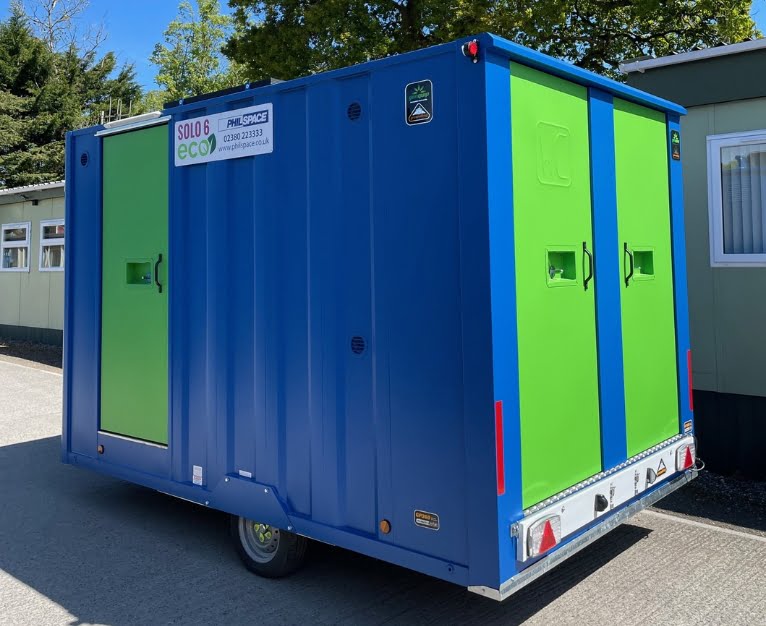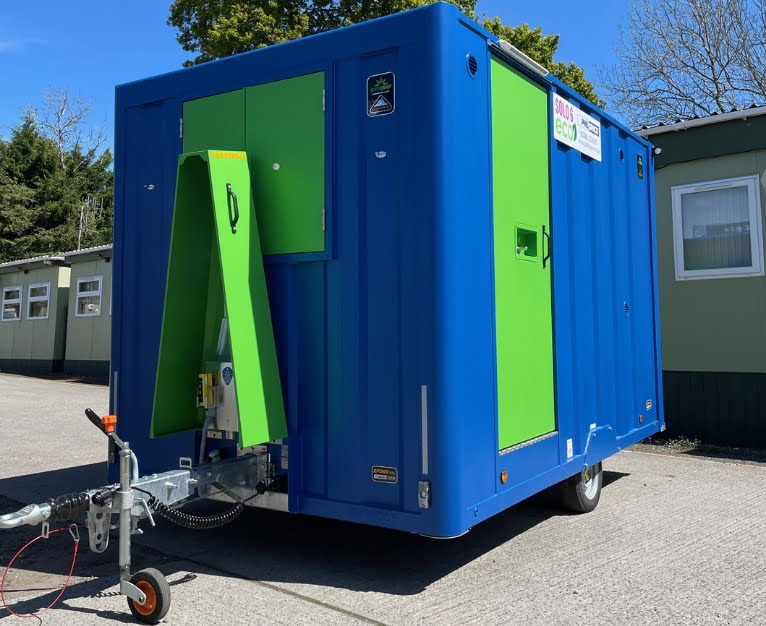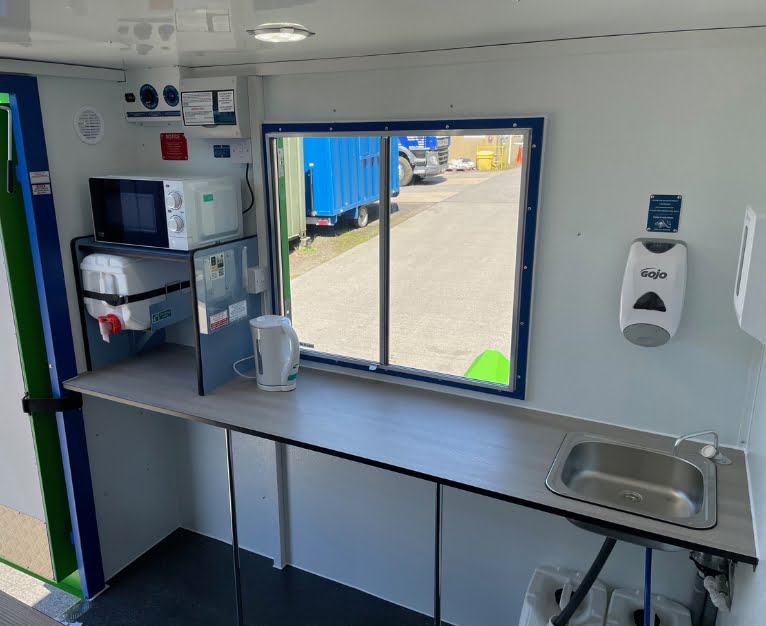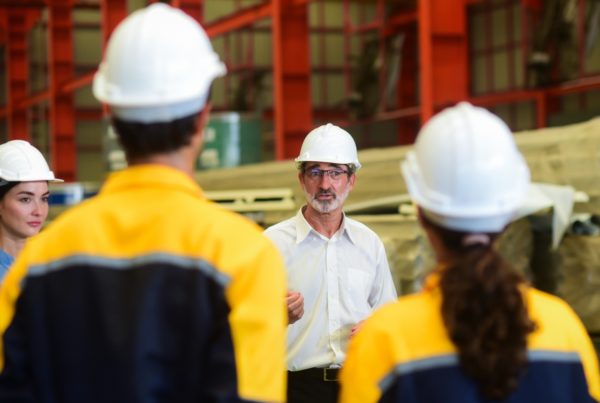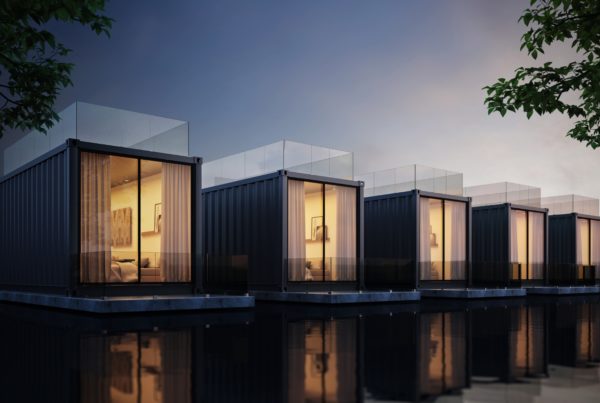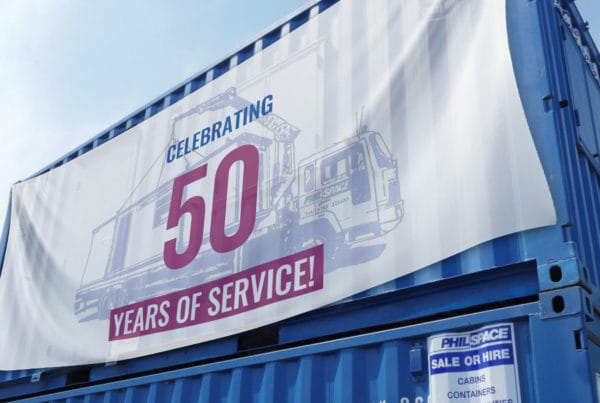Quite rightly, climate change and environmental sustainability are on the minds of business owners across the world. At Philspace, we’re proud to be a part of this movement and are dedicated to leaving a shallow ecological footprint. To this end, a common question we get asked is, ‘Can welfare units be eco-friendly?’
The sight of a container in transit or as part of a busy construction site doesn’t always evoke a sense of tranquil sustainability, but we think that, when used responsibly, they’re actually a very green solution. In this blog post, we explain how welfare units can be eco-friendly in several key ways.
They Often Use Recycled Materials
In more ways than one, shipping containers and, by extension, welfare units are a great case study for recycling.
Firstly, shipping containers of all types are typically made from durable steel.
Not only does this material have a long lifespan, which reduces the need for replacements, but it’s also highly recyclable. This means that if a container is no longer usable for its intended purpose, it can be broken down, and the raw materials can be reused.
Secondly, containers are often repurposed.
Many welfare units are made from containers that weren’t initially designed for that purpose. Not only does this reduce the environmental impact of manufacturing new materials, it also reduces waste.
They’re Extremely Mobile and Flexible
The mobility of a container welfare unit reduces the need for permanent infrastructure. This means that you don’t need to construct buildings or facilities that may result in a larger environmental footprint.
These easily transportable units can be deployed to various locations, reducing the environmental impact associated with constructing new facilities for each project. Instead, you and your staff can wash clothes, prepare meals, and relax in the same welfare unit for consecutive projects, reducing your ecological impact.
Similarly, modular design allows for scalability, enabling units to be added or removed as project requirements change without the need for extensive construction or demolition.
Portable accommodation means fewer emissions for commuters.
Working in tandem with welfare units is site accommodation. This allows your team to stay on-site for much of a project. Not only does this reduce the amount of time your employees spend sitting in traffic, but it also means fewer emissions are being transferred into the atmosphere as their vehicle usage will be reduced.
They’re Durable and Long-Lasting
As we touched on above, welfare units are built from robust, durable materials. While recycling steel is far better for the environment than producing it new, there are still emissions concerns associated with the process.
When properly maintained, a welfare unit can remain in service for decades, minimising the need for frequent replacements and reducing the environmental impact of recycling the steel and producing new units.
They’re Highly Energy Efficient
Container welfare units can be outfitted with energy-efficient features like high-performance insulation, double-glazed windows, and energy-efficient HVAC systems. In addition, LED lighting fixtures, motion sensors, and programmable thermostats further reduce electricity consumption and contribute to energy savings.
Energy efficient appliances, like low-power fridges and water heaters, help minimise overall energy demand within the units, particularly in remote locations where energy supply may be limited.
Looking for Sustainable Welfare Units for Construction Sites? Introducing the Solo 6 ECO Welfare!
At Philspace, we take our carbon footprint seriously. To ensure that we tread lightly when it comes to the environment, we’re proud to have launched this latest addition to our welfare range.
The Solo 6 ECO combines the legendary robustness and ease of use of our welfare range with innovative, sustainable technology. It’s powered by solar technology, and a backup generator offers you peace of mind.
As its name suggests, this model can accommodate six people comfortably for a wide range of purposes, including paperwork, relaxation, or office duties.
These units can make sure optimum performance is maintained when used and unmanned, which translates into savings from reduced fuel usage, reduction in generator servicing, longer generator life, and fewer breakdowns.
What are the key features?
- A solar panel with generator backup.
- Fully hot-dipped, galvanised chassis for reliability.
- 12V air-blown heating system.
- Warm water from on-board 230V heating system.
- 12V LED lighting.
- Inverter power sockets with USB connectors.
- Welded boss for removable low-level lifting eyes.
- Fuel Active system.
- Lowered & secured in 3 minutes.
Find out more today.
If you want to find out more about the Solo 6 ECO Welfare, then why not get in touch with us? Give us a call at 02380 223333 or email us at enquiries@philspace.co.uk. Alternatively, you can learn more about the rest of our welfare range by visiting our website.

